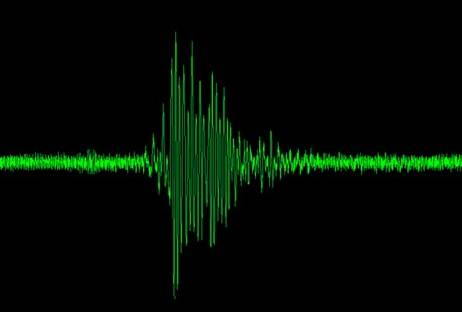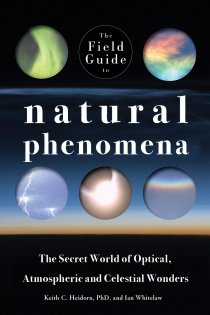 |
 |
| Home | Welcome | What's New | Site Map | Glossary | Weather Doctor Amazon Store | Book Store | Accolades | Email Us |
 | |||||||||
Weather Almanac for March 2012FROST QUAKESThe passage from autumn to winter was early and swift. As I walked through the bush toward town, I thought I heard a gunshot or small explosion. The former, cracking in the distance, is not uncommon here as it was hunting season, but I was in the village limits. Though I will never know for sure what was the source of the sharp report, I know think it was a result of weather conditions known as a frost quake or cryoseism. A cryoseism is non-tectonic seismic event caused by the expansion of water on freezing in the soil or in a rock crevasse — though cryoseisms could occur in any confining space wherein water can freeze. The water’s expansion by about nine percent when it freezes puts enormous stress on the surrounding space, and the release of this stress may be explosive, resulting in a loud sound and movements of the earth. These movements, in certain situations, can mimic a local earthquake. They are usually events on the micro-scale, though an event in February 2011 may have occurred over a regional scale, like a swarm. These events inhabit the border between meteorology and geology. A similar effect within a tree crevasse can break off branches or split trunks of even the hardest woods. The force exerted by freezing water on expansion can be illustrated by the following. Several years back, I received a letter from a reader commenting on my article Frost Flowers and Ice Ribbons. She had noted a similar ice ribbon phenomenon emerging from her Vancouver Island gate, which was of metal construction (for photos, see the article). I sent the information to Dr James Carter, who has been interested in these phenomena and has experimented with reproducing them in the laboratory. In attempting to reproduce the gate ice ribbons, several of the cast-iron caps on the steel pipes he used burst under the pressure. Those of us that live in the frigid climes of the North worry most of the winter over similar cold situations that freeze and burst our water pipes. Frost quakes, not to be confused with ice quakes, are likely common across the cold regions of the Northern Hemisphere where liquid water can rapidly freeze (and similarly in Southern Hemisphere cold regions, mostly at elevation). That would include all of Canada and many US states. The literature indicates that areas of New England have reported frost quakes including upstate New York, Vermont, Massachusetts, Connecticut, and Maine. Reports have also come from the Great Lakes region: Wisconsin, Indiana and Ohio. It is not a stretch to believe they also would occur across the US Plains States to the Pacific Northwest, and of course, in Alaska. Perhaps the most common scenario for a large frost quake that loudly shakes the earth, and may also shake buildings, starts with the saturation or near saturation of the soil or rock substrate followed by a sudden drop in temperature to levels well below freezing. An ideal weather situation for a frost quake would be found in a frigid arctic advection following a storm that has had rain or freezing rain in its warm sector with little following snow before the cold air arrives. Another would be when that frigid air follows a period of warming where melting snow has left the soil top layer saturated. In either scenario, the rapid drop in temperature would lead to rapid freezing causing the rock or soil layer to burst rather than just slowly expand and crack or break. The rapid bursting would manifest as a noisy quake with possible shaking. (As I write this, I wonder if the phrase “cold snap” might have arisen from similar situations back in the day when ambient environmental noises were not drowned by the cacophony of civilization.) Research into cryoseisms suggest that they are more common in the first cold wave of late autumn/early winter, a late, but strong one in spring, and during the night when air temperature is decreasing rapidly, often a few hours after the most significant air temperature drop. The best surface situation is a saturated soil with little or no snow cover to insulate the ground surface from the cold air. Frost quakes are usually localized phenomena, although given the size of an arctic air mass they can occur as scattered events over a larger area. The shaking can register on a nearby seismograph (as I will report below) — but then so did the crowd stomping at a Seattle Seahawks football game some years back — however, most are not. A tectonic quake would radiate further outward and usually picked up by one or more seismographs. A second aspect is that a frost quake is usually “one and done” while tectonics usually have noticeable aftershocks. Residents of areas around bodies of water — rivers, lakes, sea — often experience a similar phenomena when ice on the water body suddenly breaks due to expansion during further ice formation. (Sounds similar to these are often a start to spring breakup when the ice cracks rapidly along seams as the ice melts. Ice can also crack loudly due to mechanical forces such as winds, tides and currents.) In larger ice bodies such as glaciers and icebergs, a similar process may occur on either freezing or thawing of the ice. In such cases, large blocks of ice calve from the greater body with a loud report and corresponding shaking as the block falls. These are called ice quakes. Some Cryoseismic EventsBecause of the localized and quick nature of frost quakes, events usually are not reported nor archived. I was, however, able to find a few that were — including the event that first drew my interest to this topic. During the early morning hours of 10 February 2011, residents of central and eastern Indiana and western Ohio heard loud explosions and felt shaking similar to an earthquake. These incidents were reported to local news media and the government agencies. During the night, the temperature had fallen well below 0°F (-18°C), as low as -10°F (-23°C) in some areas, across the region, thus making conditions right for a widespread “outbreak” of frost quakes. Perhaps the best-documented cryoseism occurred during the early afternoon (12:50 pm) of 31 January 2008 at Madison, Wisconsin. That day, a shaking around Lake Mendota that lasted several seconds registered on a University of Wisconsin-Madison seismograph in the geology department. The shaking was substantial enough to concern university employees in buildings around the lakeshore who contacted UW police or the facilities department. The event came to the attention of seismologist Cliff Thurber who saw the quake’s effect on the department’s seismograph (see the trace below). Thurber attributed the event to a large shift of ice on Lake Mendota resulting from a major drop in temperature. Thurber later noticed a new large visible break in the lake’s surface ice.  University of Wisconsin Seismograph Trace |
|||||||||
 |
Now AvailableThe Field Guide to Natural Phenomena: |
Now Available! Order Today! | |
 |
 |
Now |
The BC Weather Book: |


